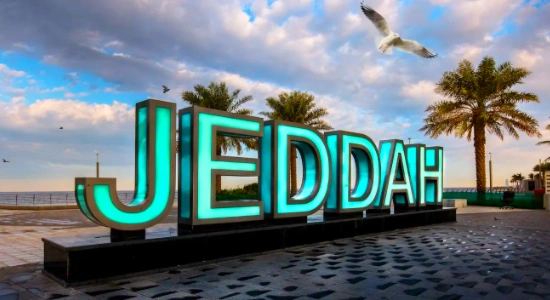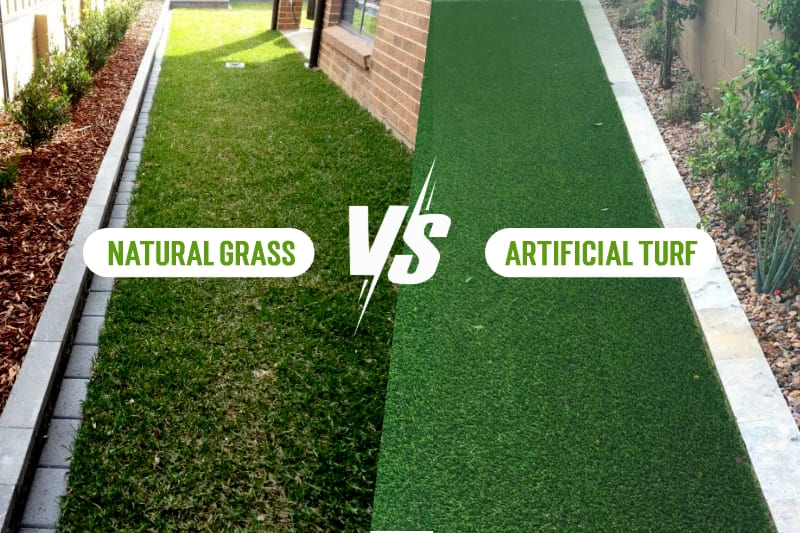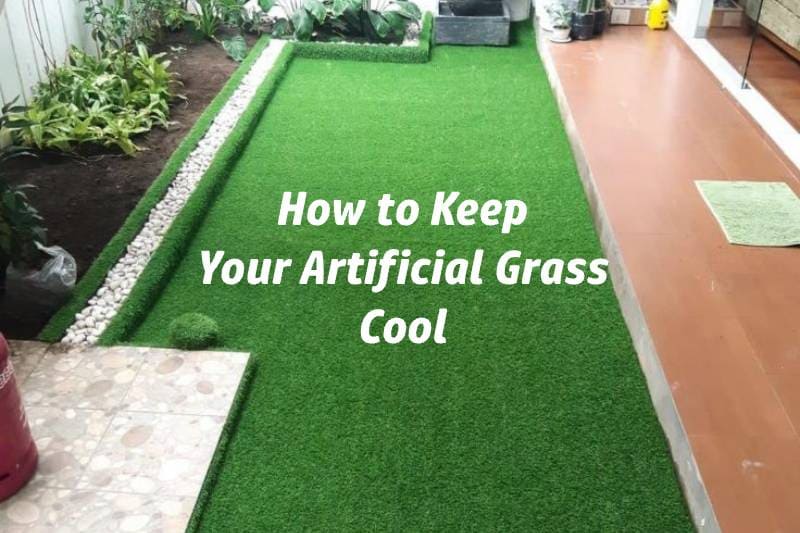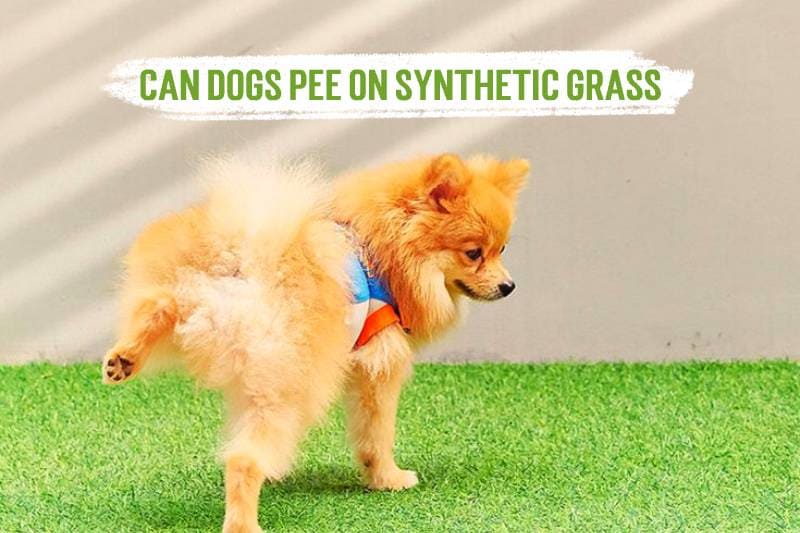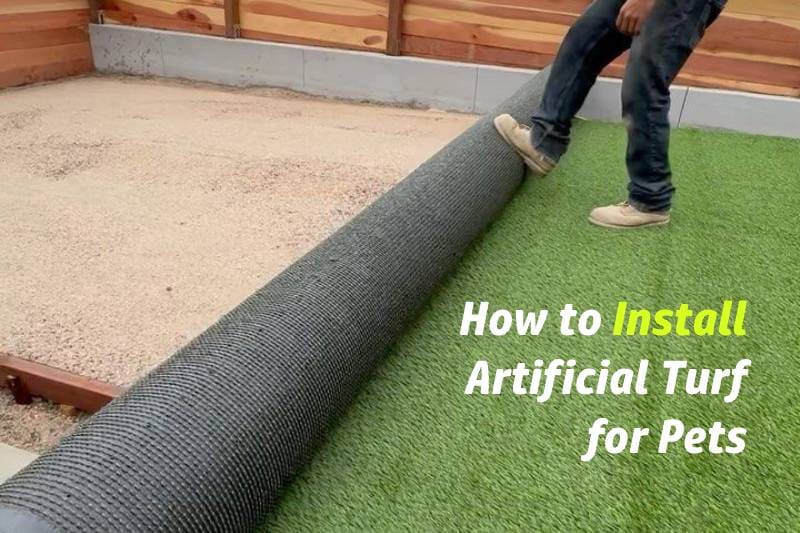I am always asked what are the pros and cons of artificial grass for dogs.
As an artificial turf expert who has been in the business for 20 years, I want to help you better understand through an article. Artificial Turf for Dogs is safe and comfy for dogs.
Pros
- Artificial turf for dogs is low maintenance, requiring no watering or mowing.
- Durability.
- Reduced allergens and chemicals.
- The maintenance cost is very low.
Cons
- Starting installation costs are high.
- Poor heat dissipation.
- Needs regular cleaning .
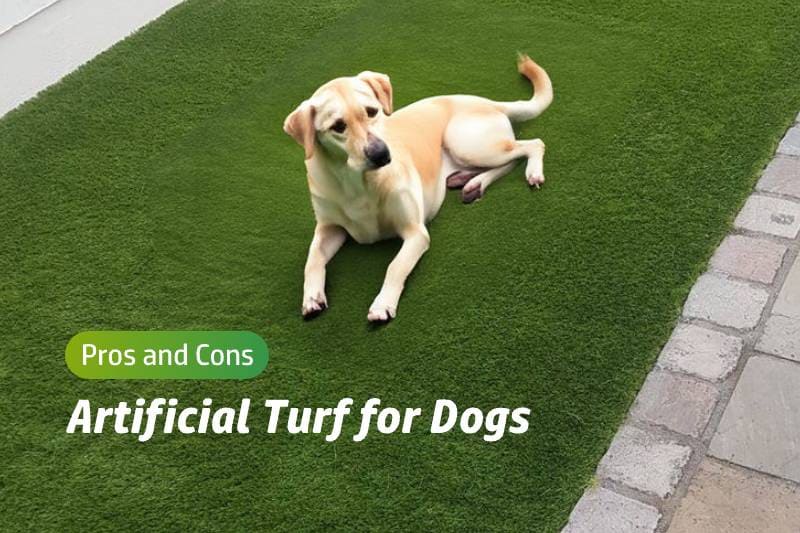
Advantages of Artificial Turf for Dogs
Artificial turf is easy to care for and lasts long, making it a favorite.
Low Maintenance
A big plus of artificial turf for dog is it needs little work. No watering, mowing, or spraying chemicals. This means more time to chill and less yard chores. Also, artificial grass with dogs is simple to clean. It doesn’t soak up pee or poop, so cleaning dog poop is easy. Just rinse it, and it’s like new!
Durability
Artificial grass is tough. It can take lots of running and playing. If your dog loves to play, this pet-friendly artificial grass stays strong. It lasts long, so you won’t need to replace it often. The synthetic turf stays bright and soft, even after years outside. It’s great for a pet-friendly landscape.
Health Benefits
Picking artificial turf has health benefits too. It cuts down on chemicals, allergens, and bugs. This is good for pets with allergies. The pet turf is safe and clean, keeping your pets healthy. With pet-safe options, your yard is pretty and safe.
Aesthetic Appeal
Artificial grass for dogs looks nice in the yard. It looks like real grass and makes my yard pretty. Real grass can turn brown, but Artificial grass stays green. This makes my yard look good all year without much work.
Artificial grass can fit any yard shape. I can put it in small or big spaces. This lets me design my yard how I like. I can make cool shapes that match my house. This makes my yard special.
Pet-Friendly Design
Artificial grass is great for pets. It’s soft and strong, so dogs can play on it. My dogs love running on it, and I know it’s comfy for them.
Artificial grass has stuff that keeps it clean. It stops germs from growing, which is good for my pets. It doesn’t fade in the sun, so it stays bright. These features make Artificial grass a good choice for dog owners like me.
Disadvantage of Fake Grass for Dogs
Artificial grass for dogs has good points, but also some bad ones.
Price
Putting in Artificial grass costs a lot at first. I saw that the starting price can be scary. But, remember, this can save money later. Artificial grass needs little care, so you save on water and lawn work. Over time, these savings can make up for the first cost.
Heat
Artificial grass can get hot. On sunny days, it feels very warm. I noticed my dogs stay away from it when it’s sunny. This heat can hurt dogs. To help, I give shade and let my dogs play when it’s cooler.
Smell and Cleanliness
Artificial grass can smell if not cleaned well. Cleaning often stops bad smells. I learned to keep artificial grass clean by rinsing it and picking up poop fast. This keeps it fresh. If you don’t clean it, it can smell bad.
Even with these problems, many dog owners think artificial grass is worth it. It’s important to think about the good and bad to decide what’s best for you and your dogs.
Environmental Impact
When I think about artificial grass for dogs, I worry about plastic. Artificial grass is made from plastic, which doesn’t break down fast. I wonder what happens when it’s old. Throwing it away can be hard, and I don’t want more plastic waste.
But there are good things too. Artificial grass saves water. It doesn’t need watering like real grass. This helps save water, which is important where water is rare. I feel happy not using much water to keep my yard nice.
Another good thing is fewer bad chemicals. Real grass needs fertilizers and bug sprays. These can harm the earth and animals. With artificial grass, I don’t need those. It stays green without bad stuff.
How to Choose the Best Artificial Grass for Dogs
Choosing artificial turf for dogs can be tricky. There are many options. Knowing about materials and design helps pick better. Let’s see what to check when picking artificial grass for pets.
Material and Design Tips
When I looked at artificial grass, I saw two main types: polyethylene and polypropylene. Each has good points. Polyethylene is softer, great for dog turf where comfort is key. Polypropylene is tougher, good for busy spots where dogs play a lot.
Another thing to think about is pile height and yarn bounce. Shorter piles are easier to clean, especially with artificial grass with dogs. Yarn bounce means grass springs back after stepping, keeping it neat. A mix of these features is best for dogs and owners.
Infill and Backing
Infill is important for synthetic turf quality. I found that antimicrobial infill stops germs and smells, which is key for pet turf. This keeps the area clean and safe for dogs.
The backing of artificial dog turf is also important. A backing that lets water through stops puddles and mold. This keeps artificial turf dry and comfy for pets, even after rain or cleaning.
Installation
When I thought about installing artificial turf, I had two choices: do it myself or hire a professional. Each option has its own perks and challenges. Let me share what I found out.
Getting the turf to fit right is super important. If it’s not done well, it can look bad or even cause problems later. When I thought about doing it myself, I worried about getting the seams right. If they aren’t perfect, the turf might come apart or look uneven.
Professionals know how to make sure the turf fits snugly. They secure it properly so it stays in place, even when my dogs run around. They also make sure the edges are neat and tidy. This gives my yard a clean, finished look.
In the end, I realized that while DIY might save some money upfront, hiring a professional offers peace of mind. I get a beautiful, durable lawn without the stress of doing it myself.
Maybe you want Artificial Turf vs Natural Grass.
Other Dog-Friendly Ground Covers
I found several ground covers that work well for dogs. They offer a natural look and feel, and some even have added benefits.
Clover, Dye-Free Bark Mulch, and Smooth Gravel
Clover: Clover is a great choice for a dog-friendly yard. It stays green, even in dry conditions, and doesn’t need much water. Plus, it’s soft underfoot, which my dogs love. Clover also helps fix nitrogen in the soil, which can improve soil health over time.
Dye-Free Bark Mulch: This option provides a natural look and is gentle on paws. I like that it doesn’t have any harmful dyes, making it safe for my dogs. It also helps retain moisture in the soil and suppresses weeds, which means less work for me.
Smooth Gravel: Gravel can be a practical choice for areas where I want to reduce mud and dirt. I choose smooth, rounded gravel to ensure it’s comfortable for my dogs to walk on. It’s easy to clean and maintain, making it a low-maintenance option.
Pavers and Hardscaping Options
Pavers: Pavers create a durable and attractive surface. I can arrange them in various patterns to add visual interest to my yard. They provide a stable surface for my dogs to play on, and I don’t have to worry about mud or grass stains.
Hardscaping: Incorporating hardscaping elements like stone pathways or patios can enhance the look of my yard. These areas are easy to clean and maintain, and they offer a solid surface for my dogs to enjoy. I can also add planters or raised beds to bring in some greenery without compromising the durability of the space.
Exploring these alternative landscaping options gives me flexibility in designing a dog-friendly yard. Each choice has its own benefits, and by mixing and matching, I can create a space that suits both my aesthetic preferences and my dogs’ needs.
Conclusion
Picking artificial turf for dogs means thinking about good and bad points. The good side is artificial grass is easy to care for, lasts long, and looks tidy. It saves time, which is great for busy dog owners. But, it can cost a lot at first and might get hot. Think about your money and weather before deciding. Experts can help put it in right. They have the skills and tools for a perfect fit. Knowing the pros and cons of artificial grass helps make a safe and fun place for dogs.
Yes, artificial turf is safe for dogs. It’s made from safe materials and often has stuff to stop germs. This makes it a clean choice for pet owners who want a safe play area for their dogs.
Cleaning artificial turf is easy. I rinse it with water to remove dirt. For pet waste, I pick up solids and then rinse the spot. Some people use mild soap and water for a deeper clean. Regular cleaning keeps the turf fresh and odor-free.
Artificial turf can get warm in the sun. On hot days, it feels warmer than real grass. To keep my pets comfy, I provide shade and encourage playtime when it’s cooler.
Artificial turf has good and bad points for the environment. It saves water since it doesn’t need watering, which is good in dry places. But, it’s made from plastic, which raises concerns about disposal. I think about these things when considering its environmental impact.




